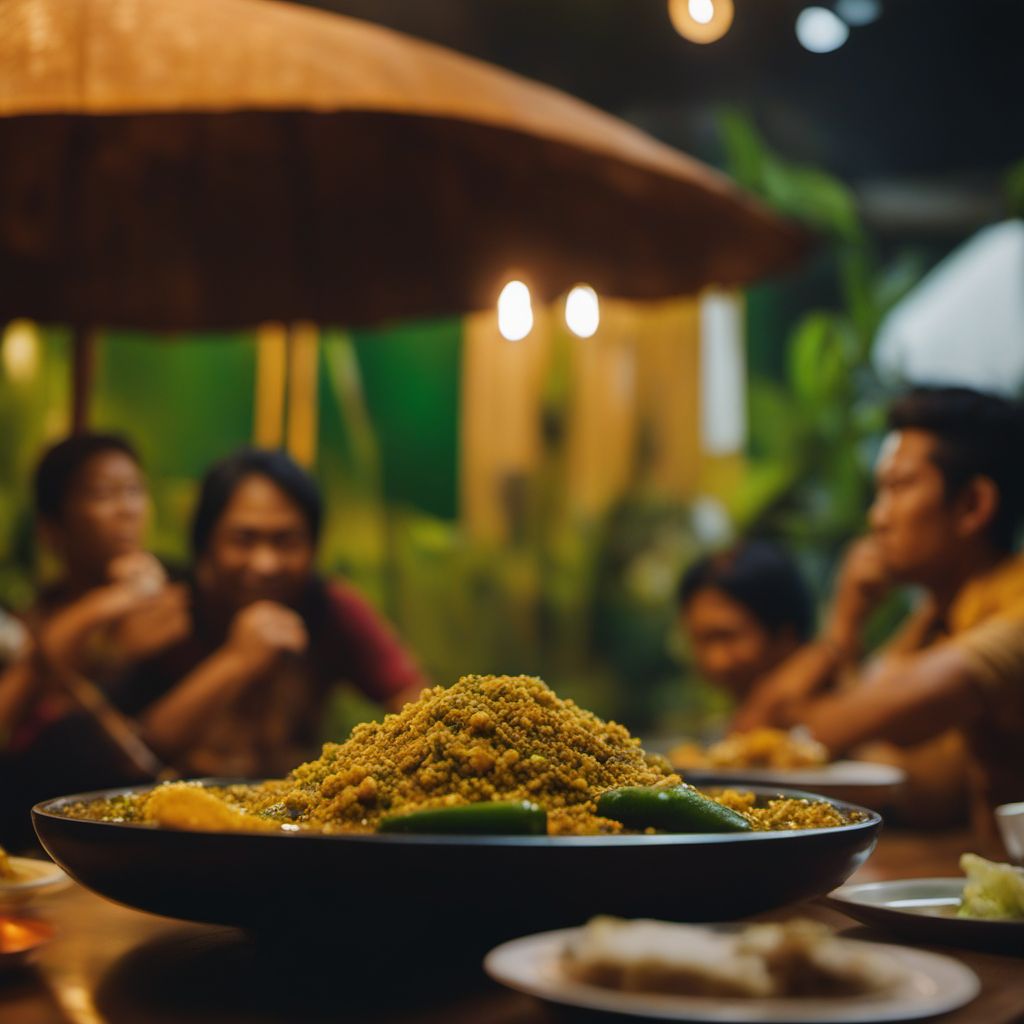
Dish
Acar kuning
Acar kuning is a tangy and spicy pickle that is often served as a side dish in Indonesian cuisine. The dish is made by slicing vegetables such as cucumber, carrot, and cabbage into thin strips and then pickling them in a mixture of vinegar, sugar, and spices such as turmeric, coriander, and cumin. The pickling process can take up to a week and the resulting pickle is bright yellow in color. Acar kuning is often served alongside rice or as a garnish for other Indonesian dishes.
Origins and history
Acar kuning has been a popular dish in Indonesia for centuries. It is believed to have originated in Java and was often served as a snack for farmers in the fields.
Dietary considerations
Suitable for vegans and gluten-free diets. May contain traces of nuts.
Variations
There are many variations of acar kuning. Some recipes call for the addition of pineapple or mango to enhance the sweetness of the pickle. Others use different types of vegetables such as green beans or eggplant.
Presentation and garnishing
Acar kuning is traditionally served in small bowls or plates and garnished with fresh herbs such as cilantro or mint. Adding a small amount of tamarind paste to the pickling mixture can help to enhance the tanginess of the pickle.
Tips & Tricks
To make the pickle less spicy, reduce the amount of chili used in the recipe. The longer the pickle is left to pickle, the more flavorful it will become.
Side-dishes
Acar kuning is often served as a side dish alongside rice or other Indonesian dishes. It pairs well with tea or coconut water.
Drink pairings
Acar kuning pairs well with tea or coconut water.
Delicious Acar kuning recipes
More dishes from this category... Browse all »

Atchara
Filipino cuisine

Baechu-kimchi
Korean cuisine

Baek kimchi
Korean cuisine

Beet Eggs
Jewish cuisine

Burong mangga
Filipino cuisine

Chilera
Ecuadorian cuisine

Chinese Pickles
Chinese cuisine

Chonggak kimchi
Korean cuisine
More cuisines from this region... Browse all »

Arab cuisine
Spicy, Sweet, Sour, Savory

Eurasian cuisine of Singapore and Malaysia
Spicy, Sweet, Sour, Savory

Malay cuisine
Spicy, Sweet, Sour, Salty, Umami

Malaysian Chinese cuisine
Spicy, Sweet, Sour, Salty, Umami

Malaysian Indian cuisine
Spicy, Sweet, Sour, Salty, Umami

Peranakan cuisine
Spicy, Sweet, Sour, Salty, Umami

Sabahan cuisine
Spicy, Sour, Sweet, Savory

Sarawakian cuisine
Spicy, Sour, Sweet, Savory

